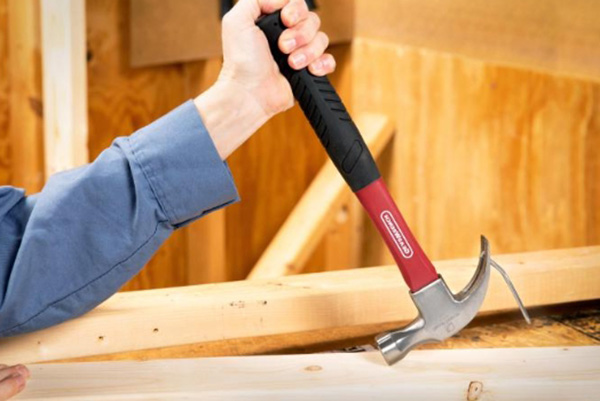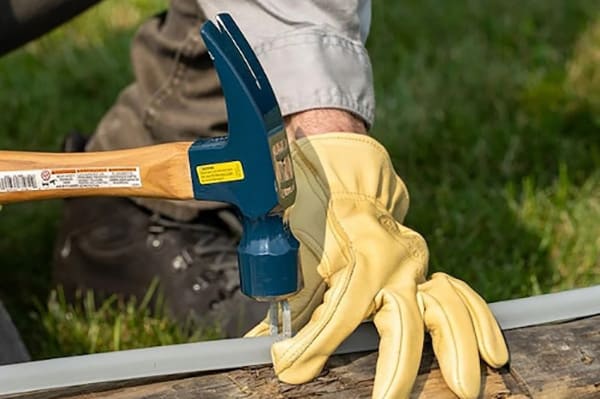The claw hammer is one of the most iconic and widely used tools in the world, essential for both professional carpenters and DIY enthusiasts alike. Known for its versatility and reliability, the claw hammer is an indispensable part of any toolkit. However, many people might not realize that there are two main types of claw hammers, each designed for specific tasks: the curved claw hammer and the straight claw hammer. This article delves into the differences between these two types, their unique uses, and why having both in your toolkit can enhance your ability to tackle a wide range of projects.
1. Curved Claw Hammer: The Classic Choice
The curved claw hammer is perhaps the most recognizable type of hammer, often found in the hands of homeowners and professionals alike. It features a hammerhead on one end, used for driving nails into various materials, and a curved claw on the other, designed primarily for pulling nails out of wood and other surfaces.
- Design and Features: The curved claw hammer typically has a rounded, slightly convex face that helps concentrate force on a smaller area, making it easier to drive nails flush with or below the surface of the material. The claw itself is gently curved, which provides excellent leverage when prying nails out of wood. This design is particularly effective for removing nails without damaging the surrounding material, as the curvature allows the user to apply upward force more efficiently.
- Uses: The curved claw hammer is ideal for general-purpose tasks, such as framing, woodworking, and basic household repairs. Its design makes it easy to remove nails, even those that are bent or partially embedded. Additionally, the curved claw can be used for minor prying tasks, such as lifting floorboards or removing small pieces of trim.
- Advantages: The primary advantage of the curved claw hammer is its ease of use for both driving and removing nails. It offers excellent control, reducing the risk of damaging materials or bending nails during removal.
2. Straight Claw Hammer: The Demolition Expert
The straight claw hammer, also known as a "rip hammer," is a more specialized tool that is particularly suited for demolition and heavy-duty tasks. Unlike the curved claw hammer, the straight claw hammer features a straight or nearly straight claw that is designed for prying and ripping apart materials rather than just removing nails.
- Design and Features: The straight claw hammer has a flat, elongated claw that is more robust than the curved version. This claw is typically longer and straighter, allowing it to be driven deep into materials such as wood, drywall, or plaster. The hammerhead itself is often similar in design to that of the curved claw hammer, with a flat or slightly convex face for driving nails.
- Uses: The straight claw hammer is the tool of choice for demolition work, such as tearing down walls, removing old framing, or dismantling wooden structures. Its straight claw can be used to wedge between boards or materials, providing the leverage needed to pull them apart. This hammer is also effective for removing nails, especially in situations where the claw needs to be driven under a nail that is flush with the surface.
- Advantages: The main advantage of the straight claw hammer is its power and effectiveness in prying and ripping tasks. The straight claw allows for deeper penetration and greater leverage, making it ideal for jobs that require forceful separation of materials. Additionally, it is often used in tasks where precision is less important, and brute strength is required.
Conclusion
Understanding the differences between the curved claw hammer and the straight claw hammer is essential for anyone who regularly undertakes construction, demolition, or DIY projects. While the curved claw hammer is the go-to tool for general-purpose use, providing excellent control and versatility, the straight claw hammer shines in situations where more forceful prying and demolition work are required.
Having both types of hammers in your toolkit ensures that you are prepared for any task, whether you need to gently remove a nail from a delicate surface or tear down an entire wall. Each hammer has its strengths, and knowing when to use the straight claw hammer versus the curved claw hammer can make a significant difference in the efficiency and success of your projects.
In the world of tools, the claw hammer remains a timeless essential, and understanding the unique roles of its two main types will equip you with the knowledge to choose the right tool for the job every time.
Post time: 08-12-2024







